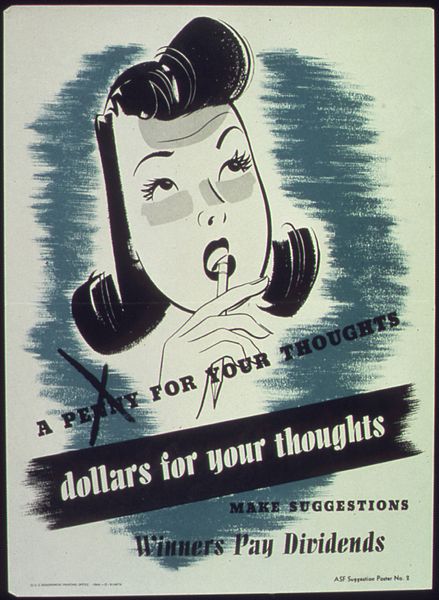
Thammasat University students are cordially invited to participate in a free online public lecture about The Neuroscience of Disruptive Thinking.
The event will be held on Wednesday, 27 October starting at 7pm Bangkok time.
It is hosted by King’s College London (KCL), the United Kingdom.
The Thammasat University Library collection includes many books about different aspects of neuroscience as well as disruptive thinking.
The speaker will be Dr. Emily Clements, who has earned a PhD in the neuroscience of entrepreneurship.
She will discuss what it means to be a disruptive innovator, how people can advance new ideas in uncertain territory, and how our brains devise new ideas. She will also address the question of how to deal with uncertainty when innovating with fresh concepts.
Disruptive thinking means to have pioneering notions that do not always stay within the comfort zone.
Thinking in unprecedented ways help make it possible for change to occur.
Disruptive thinking wakes up the mind rather than putting it to sleep.
Questions that start with words like how, why and if are often asked by children, but older students and adults can be afraid to ask unusual questions, out of fear of seeming silly.
One way to encourage innovative thinking in any organization is to carefully encourage such originality.
Instead of asking, Who has an idea for improving our product/service? it is more productive to ask a specific question about an upcoming event, such as:
If our Faculty hosted a forum about How education can improve in the Kingdom, what topics should be focused on?
Sometimes to be a disruptive thinker means challenging the way things are. Although it is important to remain polite and work well with others, agreeing all the time with statements by friends and colleagues is not a way to develop anything new.
Feel free to question what are assumed to be best practices or traditional approaches to problems, without assigning personal blame if it seems like a better decision could have been made.
Even if we feel that everything is working well, there is always a possibility to raise our standards and expectations by challenging ourselves to do better.
It is essential to be self-reliant and try to care a little less than usual about what other people may think of new ideas.
Remember that making mistakes is the best way to learn.
By being bold and taking chances with imaginative new approaches, major improvements can be possible.

An influential article about disruptive innovation was published in 2015 in the Harvard Business Review.
It suggested, in part:
The theory of disruptive innovation, introduced in these pages in 1995, has proved to be a powerful way of thinking about innovation-driven growth…
Unfortunately, disruption theory is in danger of becoming a victim of its own success. Despite broad dissemination, the theory’s core concepts have been widely misunderstood and its basic tenets frequently misapplied. Furthermore, essential refinements in the theory over the past 20 years appear to have been overshadowed by the popularity of the initial formulation. As a result, the theory is sometimes criticized for shortcomings that have already been addressed.
There’s another troubling concern: In our experience, too many people who speak of “disruption” have not read a serious book or article on the subject. Too frequently, they use the term loosely to invoke the concept of innovation in support of whatever it is they wish to do. Many researchers, writers, and consultants use “disruptive innovation” to describe any situation in which an industry is shaken up and previously successful incumbents stumble. But that’s much too broad a usage.
The problem with conflating a disruptive innovation with any breakthrough that changes an industry’s competitive patterns is that different types of innovation require different strategic approaches. To put it another way, the lessons we’ve learned about succeeding as a disruptive innovator (or defending against a disruptive challenger) will not apply to every company in a shifting market. If we get sloppy with our labels or fail to integrate insights from subsequent research and experience into the original theory, then managers may end up using the wrong tools for their context, reducing their chances of success. Over time, the theory’s usefulness will be undermined…
First, a quick recap of the idea: “Disruption” describes a process whereby a smaller company with fewer resources is able to successfully challenge established incumbent businesses. Specifically, as incumbents focus on improving their products and services for their most demanding (and usually most profitable) customers, they exceed the needs of some segments and ignore the needs of others. Entrants that prove disruptive begin by successfully targeting those overlooked segments, gaining a foothold by delivering more-suitable functionality—frequently at a lower price. Incumbents, chasing higher profitability in more-demanding segments, tend not to respond vigorously. Entrants then move upmarket, delivering the performance that incumbents’ mainstream customers require, while preserving the advantages that drove their early success. When mainstream customers start adopting the entrants’ offerings in volume, disruption has occurred…
Disruptive innovations are made possible because they get started in two types of markets that incumbents overlook. Low-end footholds exist because incumbents typically try to provide their most profitable and demanding customers with ever-improving products and services, and they pay less attention to less-demanding customers. In fact, incumbents’ offerings often overshoot the performance requirements of the latter. This opens the door to a disrupter focused (at first) on providing those low-end customers with a “good enough” product.
In the case of new-market footholds, disrupters create a market where none existed. Put simply, they find a way to turn nonconsumers into consumers. For example, in the early days of photocopying technology, Xerox targeted large corporations and charged high prices in order to provide the performance that those customers required. School librarians, bowling-league operators, and other small customers, priced out of the market, made do with carbon paper or mimeograph machines. Then in the late 1970s, new challengers introduced personal copiers, offering an affordable solution to individuals and small organizations—and a new market was created. From this relatively modest beginning, personal photocopier makers gradually built a major position in the mainstream photocopier market that Xerox valued…
Disruptive innovations don’t catch on with mainstream customers until quality catches up to their standards.
Disruption theory differentiates disruptive innovations from what are called “sustaining innovations.” The latter make good products better in the eyes of an incumbent’s existing customers: the fifth blade in a razor, the clearer TV picture, better mobile phone reception. These improvements can be incremental advances or major breakthroughs, but they all enable firms to sell more products to their most profitable customers.
Disruptive innovations, on the other hand, are initially considered inferior by most of an incumbent’s customers. Typically, customers are not willing to switch to the new offering merely because it is less expensive. Instead, they wait until its quality rises enough to satisfy them. Once that’s happened, they adopt the new product and happily accept its lower price. (This is how disruption drives prices down in a market.)

(All images courtesy of Wikimedia Commons)
